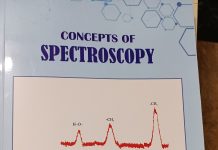China Petroleum & Chemical Corporation (Sinopec) has successfully completed the country’s first factory-based seawater hydrogen production research project at its Qingdao Refinery.
The project integrates direct seawater electrolysis with renewable energy-powered green hydrogen production.
The facility can produce twenty cubic meters of green hydrogen per hour, marking a significant milestone in hydrogen energy innovation.
Leveraging Renewable Energy for Green Hydrogen Production
The Qingdao refinery’s new approach offers a unique solution for coastal regions to harness renewable energy for green hydrogen production.
Additionally, it provides an efficient way to utilize high-salinity industrial wastewater. The project operates within a factory setting, using part of the green electricity generated by the refinery’s floating photovoltaic power station.
Seawater is split into hydrogen and oxygen through electrolysis, with the produced hydrogen integrated into the refinery’s pipeline network. This hydrogen can then be used for refining processes or to fuel hydrogen-powered vehicles.
Environmental and Operational Benefits
By converting seawater directly into hydrogen, the project helps turn unstable, hard-to-store renewable energy into green hydrogen, which is easier to store and use.
Moreover, the process conserves precious freshwater resources, offering a sustainable pathway for the development of the hydrogen energy industry. The factory-based operation model ensures high efficiency and operational stability.
Overcoming Technical Challenges
Despite its potential, seawater hydrogen production comes with challenges. Seawater contains about three percent salt, and impurities like chloride ions can corrode electrolytic electrodes.
Cation deposits can also clog equipment channels, reducing efficiency and causing damage. Sinopec, in collaboration with the Dalian Institute of Petroleum and Petrochemicals, has overcome these challenges through advanced equipment innovations.
These include chlorine-resistant electrode technology, high-performance electrode plates, and a seawater circulation system, all of which have ensured a smooth integration of research and practical applications.
Future Prospects of Seawater Hydrogen Production
The successful demonstration of the seawater hydrogen production project paves the way for large-scale industrial applications in the future.
Sinopec is accelerating its efforts to become China’s leading hydrogen energy company, pushing forward research and technological advancements across the entire hydrogen industry chain.
Ongoing Commitment to Hydrogen Energy
Sinopec has already made significant progress in the hydrogen energy sector. The company has deployed a megawatt-scale PEM electrolyzer and launched China’s first 100-kilowatt Solid Oxide Electrolysis Cell (SOEC) project.
By 2024, Sinopec has established 136 hydrogen refueling stations and built 11 hydrogen fuel supply centers.
As reported by prnewswire.com, the efforts reflect Sinopec’s ongoing commitment to driving high-quality growth in the hydrogen energy industry.































